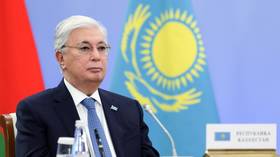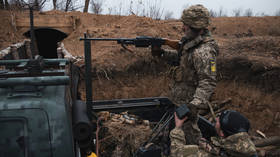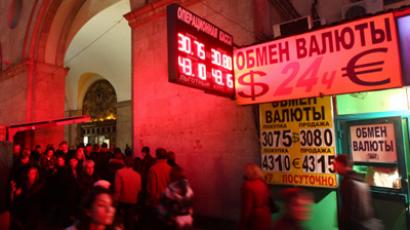Russia's banks: Liquidity problems or not?

Amidst conflicting data about the liquidity state of the Russian banking system Business RT spoke with Aleksey Terekhov, Vice President at FBK and Dmitry Vinogradov, Head of strategy and banking at UBS, about the risks in the system.
Aleksey Terekhov, banking analyst at FBKRT: Are there any indications Russian banking can face serious problems?AT: “Currently Russian banking is facing certain problems, with the Agency for Deposit Insurance saying people have started to rely less on banks and are bring less of their savings to deposits. This is coupled by an almost flat dynamic in monetary base growth this year. All this points to the threat of insufficient liquidity, which was actually the case in 2008, before the current crisis unfolded. ”RT: Does Russian banking have enough reserves?AT: “Talking in the language of figures, the ratio of reserves to loans currently stands at 4.6%, which is 1% down year on year, but is still not too optimistic, as equity capital has grown just 3-5% in the same period. M2 indicator is also slowing. So, it’s clear that liquidity threat is there and if these trends develop, the situation can become dangerous. ”RT: What can be done to avoid 2008 scenario?AT: “Not to fall a victim of an inflationary threat. I think, if Russian financial authorities now choose to focus on targeting inflation and strong rouble, which basically would mean taking money out of the system, problems can unfold.”Dmitry Vinogradov, banking analyst at UBSRT: Is Russian banking likely to face any serious problems?DV: “I think that the CBR is now much better prepared to deal with any liquidity problems. And when 2008 crisis started unfolding, we did see meaningful liquidity pressures and that can be evident by the fact that at some point MosPrime went above 25%. Whether there’s a liqudity pressure now? Well, if we look at the Interbank rate, we’ll see a big change, but in terms of magnitude this change is nowhere near relative to the change we observed 3 years ago. And today the CBR has much more tools to deal with any liquidity pressures. We see that the volume of REPO options has really increased, which is the result of CBR stepping in and providing for the necessary liquidity for Russian banks. The other thing is that Russian banking is pretty much different now from what it was 3 years ago. The monetary policy the CBR is following now is pretty much different. Remember that before the 2008 crisis the CBR focused on targeting inflation and the exchange rate. As a result the delayed devaluation of rouble made it quite volatile. Now the exchange rate has been volatile, it initially depreciated quite significantly but more recently the rouble started strengthening. And we no longer see big rotation between rouble deposits and dollar ones, which was also one of the concerns 3 years ago.”RT: Are we likely to see again a 2008 year scenario?DV: “Today very much depends on a macroeconomic situation, which is very unstable indeed. We don’t know when the European debt crisis will be resolved, we are obviously concerned about the risks to global growth in the US and more recently in China – that’s given the problems in the construction and banking sectors. So, the situation may change quite quickly, with the oil price coming under pressure and of course making Russia’s macroeconomic case very different. But if nothing really serious happens in the world economy, I’m not really worried about Russia.”














